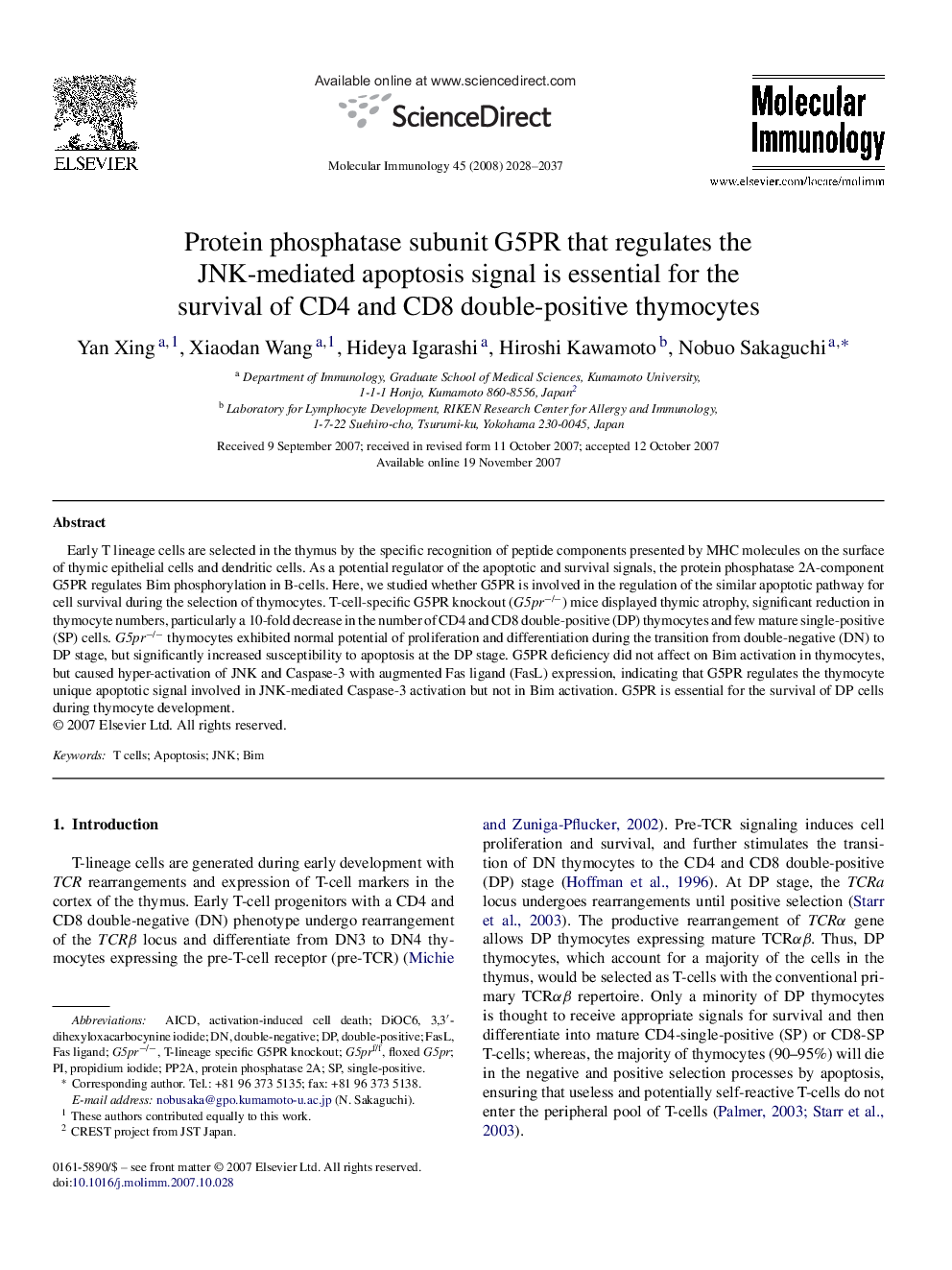| Article ID | Journal | Published Year | Pages | File Type |
|---|---|---|---|---|
| 2832864 | Molecular Immunology | 2008 | 10 Pages |
Early T lineage cells are selected in the thymus by the specific recognition of peptide components presented by MHC molecules on the surface of thymic epithelial cells and dendritic cells. As a potential regulator of the apoptotic and survival signals, the protein phosphatase 2A-component G5PR regulates Bim phosphorylation in B-cells. Here, we studied whether G5PR is involved in the regulation of the similar apoptotic pathway for cell survival during the selection of thymocytes. T-cell-specific G5PR knockout (G5pr−/−) mice displayed thymic atrophy, significant reduction in thymocyte numbers, particularly a 10-fold decrease in the number of CD4 and CD8 double-positive (DP) thymocytes and few mature single-positive (SP) cells. G5pr−/− thymocytes exhibited normal potential of proliferation and differentiation during the transition from double-negative (DN) to DP stage, but significantly increased susceptibility to apoptosis at the DP stage. G5PR deficiency did not affect on Bim activation in thymocytes, but caused hyper-activation of JNK and Caspase-3 with augmented Fas ligand (FasL) expression, indicating that G5PR regulates the thymocyte unique apoptotic signal involved in JNK-mediated Caspase-3 activation but not in Bim activation. G5PR is essential for the survival of DP cells during thymocyte development.
